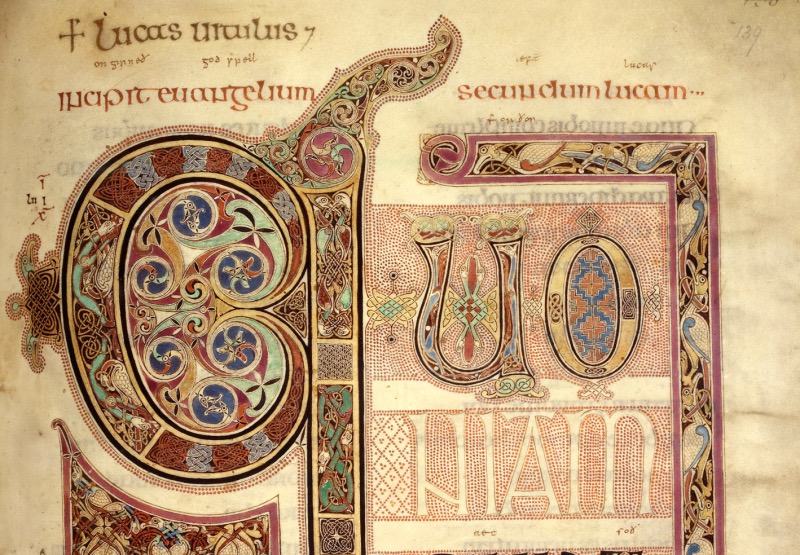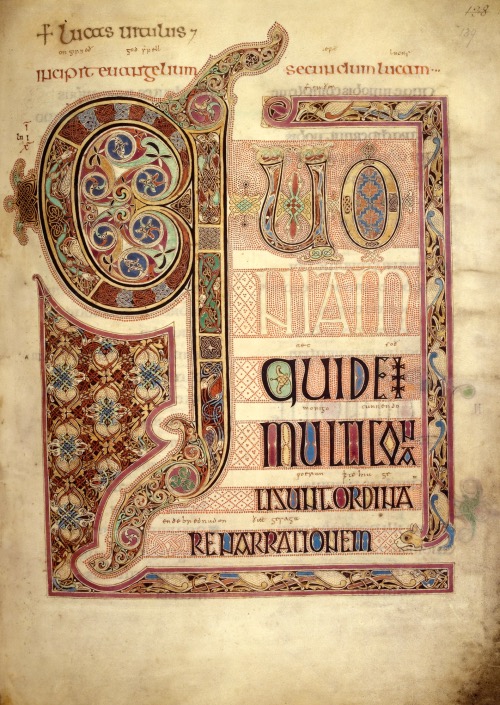
DAVID ADAMS looks at one of the treasures held in the British Library…
Held to be the most spectacular example of a manuscript from Anglo-Saxon England, The Lindisfarne Gospels contain a copy of the four Gospels in Latin as well as associated texts, such as chapter lists and letters written by St Jerome.

Title page to the Gospel of Luke from the Lindisfarne Gospels. PICTURE: British Library/Cotton MS Nero D IV
Created about 700 AD at Lindisfarne Priory on Holy Island off the coast of Northumbria, the work features four highly decorated “carpet pages” – so called because of their resemblance to an ornate carpet – as well as full page images of the four Evangelists – Matthew, Mark, Luke and John – and an illuminated page featuring the Chi-Rho, a symbol in which the first letters of Christ’s name are abbreviated and written in Greek as XPI.
The Gospels, which are believed to have taken 10 years to create, are thought to have been the work of one person. This is believed to have been Eadfrith, a monk who became bishop in about 698 in a post he is thought to have held until 722, and who is credited with the work in a note – known as a colophon – added by a priest named Aldred in the late 10th century.
Aldred, who served as provost at a community at Chester-le-Street near Durham, also added an Old English translation above the Latin text – the oldest existing translation of the Gospels into English.
Aldred’s colophon also credits a Bishop Æthilwald with binding the work and Billfrith, an anchorite, with the external decoration of precious metals and gemstones (this cover was apparently stolen during Viking raids and a replacement made in the mid-19th century). He says the work was created in honour of St Cuthbert.
The Gospels apparently ended up at Durham Cathedral and may have been seized during King Henry VIII’s Dissolution of the Monasteries. They eventually passed into the library of Sir Robert Cotton which was acquired by the British Museum in the 18th century (and then to the British Library when it separated from the museum in 1973.
Held by the British Library, the Lindisfarne Gospels can usually be seen in the Sir John Ritblat Treasures Gallery. It can also be viewed on the library’s ‘digitised manuscripts’ website.





